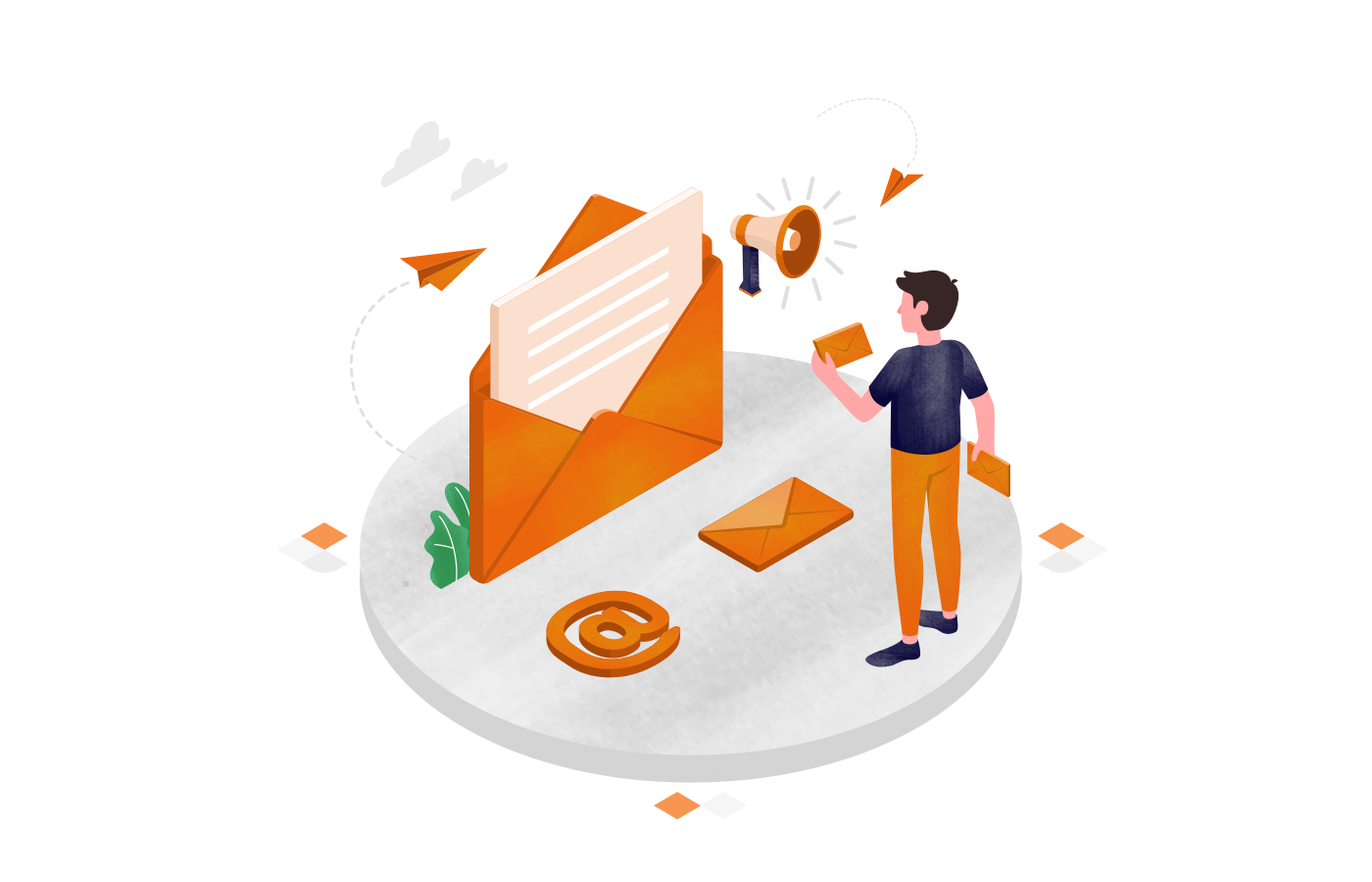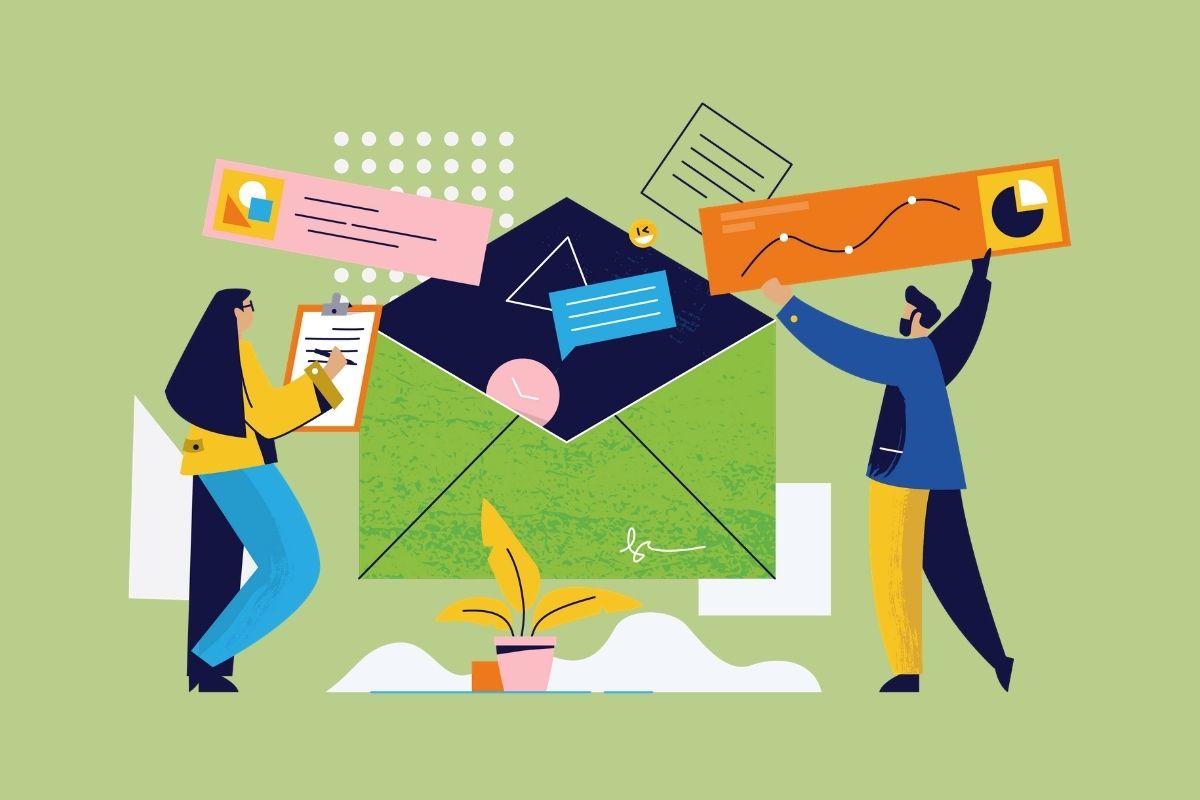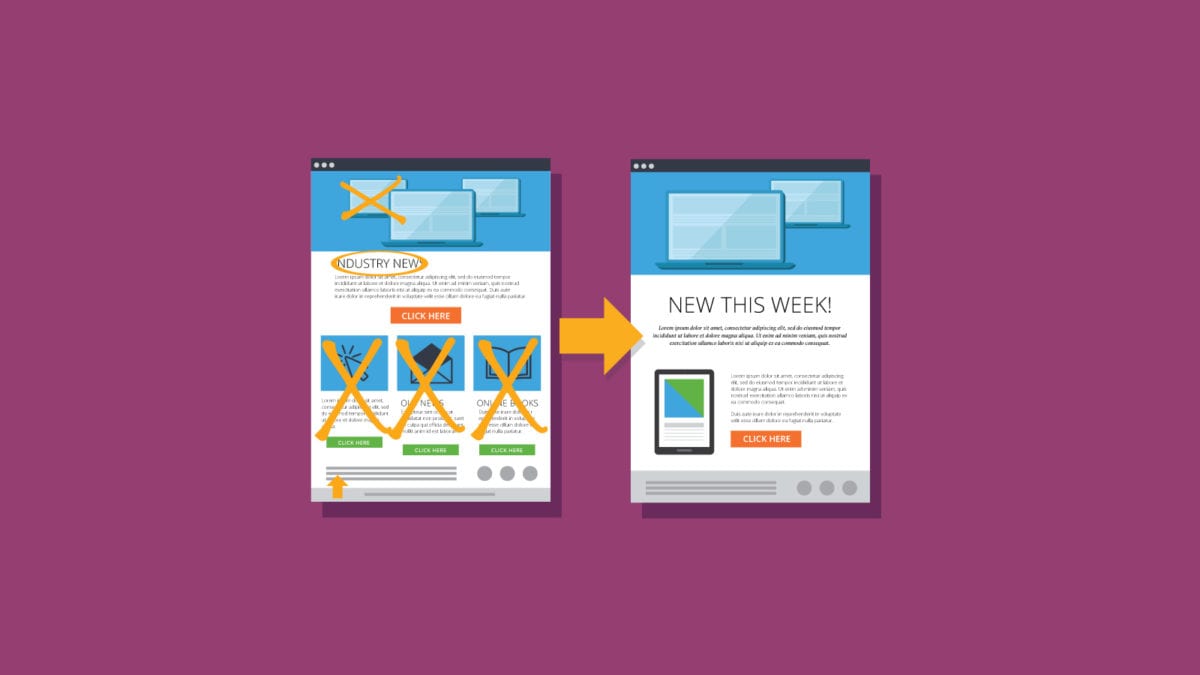Launching A Successful Email Marketing Campaign - With The Best Templates To Do It
Email marketing is a powerful digital marketing strategy that involves sending emails to prospects and customers. Effective email marketing campaignonverts prospects into customers and turns one-time buyers into loyal, raving fans. It's a direct and personalized way to communicate with your audience, share valuable content, and promote your brand or products.
Planning Your Email Marketing Campaign
When it comes to email marketing, having a well-thought-out strategy is crucial for success. Without a clear plan, your campaign could miss its target, resulting in wasted effort and resources. Here's how to lay the groundwork for a successful email marketing campaign.
Setting Clear Objectives And Goals
Before you start crafting emails, it's essential to define what you want to achieve. Are you looking to increase brand awareness, promote a new product, or perhaps drive more traffic to your website? Setting specific, measurable, achievable, relevant, and time-bound (SMART) goalswill give your campaign direction and purpose. For example, you might set a goal to grow your email list by 20% within the next quarter or to achieve a 25% open rate on your promotional emails.
Understanding Your Target Audience
Knowing who you're emailing is just as important as knowing why. To create content that resonates, you need a deep understanding of your target audience. Consider factors like demographics, interests, purchasing behavior, and how they've interacted with your brand in the past. This information will help you tailor your messages to meet their needs and preferences, increasing the likelihood of engagement.
Deciding On The Types Of Emails To Send
There's a variety of email types you can send, each serving a different purpose in your overall strategy. Here are a few to consider:
- Newsletters: Regular updates that keep your audience informed about your brand, industry news, or product tips.
- Promotional Emails: Special offers, discounts, or information about new products designed to drive sales.
- Transactional Emails: Order confirmations, shipping updates, and other notifications related to a customer's purchase.
- Re-engagement Emails: Aimed at rekindling interest among subscribers who haven't interacted with your brand in a while.
Decide which types align with your goals and how often you'll send them. A balanced mix can keep your audience engaged without overwhelming them.
By setting clear objectives, understanding your audience, and deciding on the types of emails to send, you'll have a solid foundation for your email marketing strategy. This preparation will not only streamline your campaign but also enhance its effectiveness, leading to better results and a stronger connection with your audience.
Building And Segmenting Your Email List
Building a robust email list is the backbone of any successful email marketing campaign. It's not just about collecting as many email addresses as possible; it's about gathering quality contacts who are genuinely interested in what you have to offer. Here's how to create an effective opt-in form, use incentives to grow your list, and segment it for more personalized campaigns.
Creating Effective Opt-In Forms And Placement Strategies
Opt-in formsare your primary tool for collecting email addresses. To maximize their effectiveness, follow these tips:
- Visibility: Place your opt-in form where visitors can easily find it. Common spots include the top of the sidebar, the footer of your website, or as a pop-up.
- Simplicity: Ask for only the essential information, like name and email address, to avoid overwhelming subscribers.
- Design: Make sure the form is visually appealing and matches your brand's style.
- Call-to-Action (CTA): Use a strong CTA that compels visitors to subscribe, such as "Join Now" or "Get Updates."
Offering Incentives And Lead Magnets
To encourage sign-ups, offer something valuable in return. This could be a lead magnet—a free item or service given away for the purpose of gathering contact details. Examples include:
- E-books
- Whitepapers
- Discount codes
- Free trials
- Webinars
The key is to ensure that your lead magnet is relevant to your audience's interests and needs.
Segmenting Your List For Personalized Campaigns
Once you have a list of subscribers, the next step is to segmentthem. This means dividing your list into smaller groups based on certain criteria. Segmentation allows you to tailor your emails to better suit the preferences of different audience segments. Here are some ways to segment your list:
- Demographics: Age, gender, job title, etc.
- Geography: Country, city, climate zone, etc.
- Behavior: Purchase history, email engagement, website activity, etc.
- Survey Responses: Interests, preferences, feedback, etc.
By segmenting your list, you can send more targeted and relevant emails, which can lead to higher engagement rates and better campaign performance. Remember, a personalized email is more likely to resonate with the recipient, making them feel valued and understood.
Crafting Your Email Campaign
Creating an effective email marketing campaign involves more than just sending out a mass email to your list. It requires careful planning, design, and content creation to ensure that your message resonates with your audience and prompts them to take action. Here's how to craft an email campaign that stands out and delivers results.
Designing Visually Appealing And Responsive Emails
Visual appealis crucial in email marketing. An attractive email can grab the recipient's attention and encourage them to read through your content. Here are some tips for designing emails that catch the eye:
- Use a clean layout: A cluttered email can be overwhelming. Stick to a simple, organized layout that guides the reader through your content.
- Incorporate your brand: Use your brand's colors, fonts, and logo to create a consistent experience across all your marketing materials.
- Optimize for mobile: With more people checking email on their phones, ensure your design is responsive and looks good on various screen sizes.
- Use images wisely: Images can convey a lot of information quickly, but too many can distract or slow down loading times. Use high-quality, relevant images sparingly.
- Whitespace is your friend: Don't be afraid of empty space. Whitespace can help to break up text and make your email easier to read.
Writing Engaging And Personalized Content
The content of your email is what delivers your message and convinces your audience to take action. Here's how to write content that engages and converts:
- Know your audience: Write as if you're speaking directly to the reader, using language they understand and relate to.
- Personalize your message: Use the recipient's name and reference their interests or past interactions with your brand to make the email feel tailored to them.
- Provide value: Whether it's informative content, a special offer, or a helpful tip, make sure your email adds value to the recipient's day.
- Keep it concise: Long-winded emails can lose the reader's interest. Get to the point quickly and clearly.
- End with a clear call-to-action: Tell the reader exactly what you want them to do next, whether it's to make a purchase, read a blog post, or sign up for a webinar.
Creating Compelling Subject Lines And Calls-to-Action
The subject line is the first thing recipients see, and it can make or break your email campaign. Similarly, the call-to-action (CTA) is what prompts the recipient to take the next step. Here's how to craft compelling subject lines and CTAs:
- Spark curiosity: Use a subject line that piques interest without giving everything away.
- Create urgency: Phrases like "limited time offer" or "while supplies last" can encourage recipients to act quickly.
- Be clear and concise: Subject lines should be short and to the point, ideally under 50 characters.
- Test different CTAs: Experiment with different words, colors, and placements to see what drives the most conversions.
- Make it stand out: Your CTA should be visually distinct from the rest of your email, often in the form of a button or link.
Scheduling And Automating Follow-up Emails
Timing can significantly impact the success of your email campaign. Additionally, follow-up emails can keep the conversation going and lead to better engagement. Here's how to schedule and automate your emails:
- Find the best time to send: Analyze your audience's behavior to determine when they're most likely to open and read your emails.
- Automate the process: Use email marketing software to schedule your emails and send follow-up messages based on recipient actions.
- Create a series: Develop a sequence of emails that guide the recipient through a journey, providing more information or offers along the way.
- Be mindful of frequency: Don't bombard your list with too many emails, which can lead to unsubscribes. Find a balance that keeps your audience engaged without overwhelming them.
By focusing on these key elements of crafting your email campaign, you can create a powerful marketing tool that resonates with your audience and drives them to take action. Remember to keep testing and refining your approach to find what works best for your brand and your subscribers.
Measuring Success And Optimizing Campaigns
When it comes to email marketing, launching your campaign is just the beginning. To truly harness the power of email marketing, you need to measure its success and continuously optimize your strategies. This ensures that your campaigns remain effective and engaging over time.
Tracking Key Performance Indicators (KPIs)
Key performance indicatorsare the metrics that will tell you how well your email campaign is performing. Here are some of the most important KPIs to track:
- Open Rate: This measures the percentage of recipients who opened your email. It gives you an idea of how effective your subject line was in capturing attention.
- Click-Through Rate (CTR): This indicates the percentage of email recipients who clicked on one or more links contained in an email. It helps assess the engagement level with your content.
- Conversion Rate: This is the percentage of email recipients who clicked on a link within an email and completed a desired action, such as making a purchase or filling out a form.
- Bounce Rate: This tracks the percentage of your emails that could not be delivered to the recipient's inbox. A high bounce rate may indicate problems with your email list quality.
- Unsubscribe Rate: This measures the rate at which people are opting out of your email list. It's natural to have some unsubscribes, but a high rate can be a sign of content that is not resonating with your audience.
To effectively track these KPIs, use email marketing software that provides detailed analytics. This will allow you to see these metrics at a glance and make informed decisions.
A/B Testing For Improved Engagement
A/B testing, also known as split testing, is a method of comparing two versions of an email to see which one performs better. By changing one element at a time, such as the subject line, email copy, or call-to-action, you can determine what resonates most with your audience. Here's how to conduct an A/B test:
- Select one variable to test: This could be anything from the email's subject line to the color of the call-to-action button.
- Create two versions of the email: Version A is your control, and Version B includes the change you're testing.
- Split your email list: Send Version A to one half of your list and Version B to the other.
- Analyze the results: After a set period, compare the performance of both emails based on your KPIs.
By regularly conducting A/B tests, you can incrementally improve the performance of your email campaigns.
Analyzing Feedback And Adjusting Strategies Accordingly
Feedback from your audience is a goldmine of information. Pay attention to the replies you receive from your emails. Are there common questions or concerns? What kind of feedback are you getting? Use this information to adjust your email content, tone, and offers.
Additionally, consider sending out surveys to your subscribers to gather more detailed feedback. This can help you understand their needs and preferences, allowing you to tailor your campaigns more effectively.
Templates Needed For A Email Marketing Campaigns
Creating effective email marketing campaigns often involves using well-designed templates. Here's a brief overviewof key templates needed for successful email marketing:
Newsletter Templates:Keep your audience informed about your latest news, products, or content. Feature a clean layout, clear sections for different content types, and visually appealing design.
Promotional Templates:Highlight special offers, discounts, or promotions to drive sales. Use eye-catching visuals, compelling call-to-action (CTA) buttons, and a sense of urgency.
Welcome Email Templates:Make a positive first impression on new subscribers. Include a personalized greeting, introduction to your brand, and guidance on what to expect.
Abandoned Cart Templates:Encourage customers to complete their purchase if they've abandoned their shopping cart. Provide a reminder of the abandoned items, a persuasive message, and a simple checkout process.
Survey/Feedback Templates:Gather customer feedback to improve products or services. Clearly state the purpose for the survey, incentivize participation, and use a user-friendly design.
Event Invitation Templates:Promote and invite subscribers to events, webinars, or product launches. Include event details, engaging visuals, and a clear RSVP or registration process.
Transactional Email Templates:Confirm transactions, share order updates, or provide account-related information. Ensure clarity, include order details, and incorporate cross-selling opportunities where relevant.
Re-engagement Templates:Win back inactive subscribers. Provide a compelling reason to re-engage, an attractive offer, and a clear call to action.
Social Media Integration Templates:Encourage your subscribers to connect with us on various social platforms by exploring our engaging content and following us through the provided social media icons. Stay updated on exciting snippets and seamlessly transition to our social profile in this resourcefrom Medialicious experts.
Mobile-Responsive Templates:Ensure your emails are easily readable and navigable on mobile devices. Incorporate responsive design, concise content, and well-optimized images.
Email Marketing Campaign - FAQs
What Is An Email Campaign In Marketing?
An email campaignin marketing refers to a coordinated series of email messages sent to a targeted audience to achieve specific business goals. These campaigns are a fundamental part of email marketing strategies and are designed to nurture leads, build relationships, promote products or services, and drive engagement.
What Are The 4 Types Of Email Marketing?
- a. Newsletter Emails:Regular updates containing news, content, or information.
- b. Promotional Emails:Highlighting special offers, deals, or discounts.
- c. Transactional Emails:Confirming transactions, order details, or providing account information.
- d. Lifecycle Emails:Targeting subscribers at different stages of their customer journey, such as welcome emails, re-engagement emails, and abandoned cart emails.
How Do I Create An Email Marketing Campaign Plan?
- a. Define Objectives:Clearly outline the goals and objectives of your email campaign.
- b. Identify Target Audience:Understand your target audience and segment your email list accordingly.
- c. Craft Compelling Content:Create engaging and relevant content for your emails.
- d. Design Appealing Templates:Use well-designed and mobile-responsive templates.
- e. Set a Schedule:Plan the timing and frequency of your email sends.
- f. Personalization:Incorporate personalization to make emails more relevant.
- g. Include Clear CTAs:Use compelling calls-to-action to drive desired actions.
- h. Test and Optimize:Conduct A/B testing to optimize elements for better performance.
- i. Monitor and Analyze:Track key metrics, analyze results, and adjust strategies accordingly.
- j. Compliance:Ensure compliance with email marketing regulations and obtain necessary permissions.
Conclusion
Remember, the goal is to create an email marketing campaign that resonates with your audience. By tracking the right metrics, testing different elements, and listening to your subscribers, you can refine your approach and achieve better results over time. Keep iterating on your strategy, and you'll find that your email marketing campaigns become more successful with each send.




